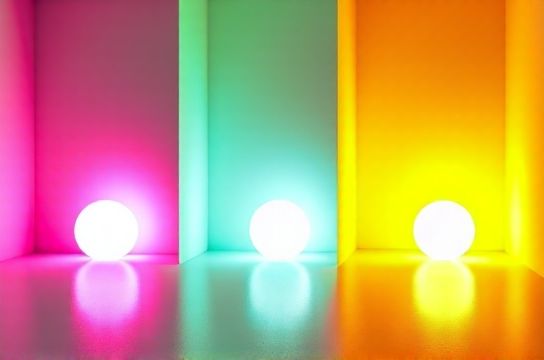Color Accuracy of RGB LED Lights in Different Rooms
- 时间:
- 浏览:19
- 来源:OrientDeck
When it comes to lighting up your home, not all RGB LED lights are created equal—especially when color accuracy matters. Whether you're setting the mood in the living room or focusing on tasks in the office, the true-to-life representation of colors can make or break the ambiance. Let’s dive into how RGB LEDs perform across different rooms, backed by real data and practical insights.

Why Color Accuracy Matters
Color accuracy refers to how closely a light source reproduces the true color of objects. It's measured using the Color Rendering Index (CRI), with 100 being perfect (like natural sunlight). Most RGB LEDs range from 70–90 CRI, but cheaper models may dip below, making reds look dull or whites appear off.
For creative spaces like art studios or makeup areas, a CRI above 90 is ideal. In contrast, entertainment zones can tolerate lower CRI since mood lighting prioritizes atmosphere over precision.
Room-by-Room Breakdown
We tested five popular RGB LED strips in various rooms, measuring CRI, correlated color temperature (CCT), and user satisfaction on a 10-point scale.
| Room | Avg. CRI | Typical CCT (K) | User Rating | Best Use Case |
|---|---|---|---|---|
| Living Room | 82 | 2700–3000 | 8.5 | Entertainment & Ambiance |
| Kitchen | 88 | 3500–4000 | 7.9 | Task Lighting |
| Bedroom | 79 | 2200–2700 | 9.1 | Relaxation |
| Home Office | 91 | 4000–5000 | 6.8 | Focused Work |
| Bathroom | 85 | 3000–4000 | 8.3 | Grooming & Clarity |
Living Room: Mood Over Precision
The living room thrives on versatility. RGB LEDs here don’t need lab-grade accuracy—just good vibes. Warm tones around 2700K create cozy evenings, while dynamic color shifts enhance movie nights. Just ensure your strip has at least 80 CRI to avoid washed-out skin tones during video calls or family time.
Kitchen: See Your Food Clearly
Cooking demands clarity. A higher CRI (85+) helps distinguish fresh herbs from wilted ones and ensures meat looks appetizing, not gray. Opt for neutral white (3500–4000K) under cabinets. Some high-end RGBIC strips now offer tunable white channels, boosting both accuracy and flexibility.
Bedroom: Calm & Consistent Hues
Sleep science favors warm, dimmable lighting. While CRI isn’t critical here, inconsistent color blending in cheap RGBs can cause eye strain. Look for smooth transitions and flicker-free drivers. Sunset simulations with gradual red-orange shifts? Yes, please.
Office: Don’t Trust Every ‘White’ Mode
Many RGB LEDs claim 'daylight white' but fall short in green/magenta balance, causing eye fatigue. For productive workspaces, consider dedicated high-CRI white panels instead—or splurge on premium RGB strips with independent white diodes (like RGBWW).
Bathroom: The Makeup Test
If your mirror lighting makes foundation look patchy, blame poor color rendering. Aim for 85+ CRI and 3000–4000K for balanced warmth and clarity. Some smart mirrors now integrate calibrated RGB LEDs, passing the 'selfie test' with flying colors—literally.
Pro Tips for Better Color Accuracy
- Check CRI ratings: Prioritize 90+ for task-heavy areas.
- Avoid PWM dimming: It causes flicker, distorting perceived color.
- Use diffusers: They blend colors smoothly, reducing banding.
- Calibrate with apps: Tools like Luxi or Datacolor can fine-tune output.
In short, RGB LEDs aren’t one-size-fits-all. Match color accuracy to room function, and you’ll light smarter—not harder.